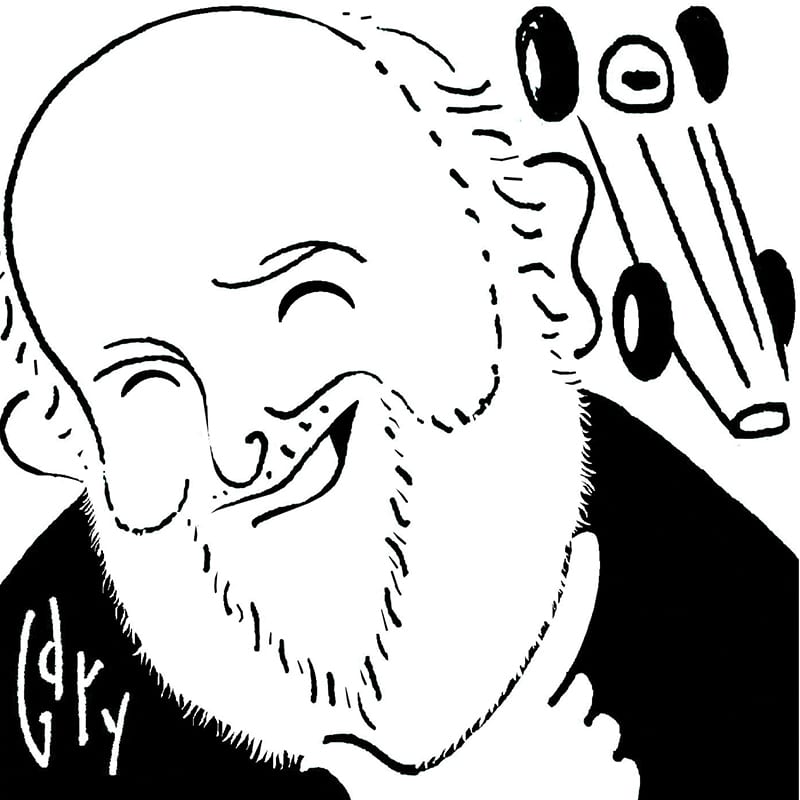Doug Nye: Aston Martin’s disastrous first efforts in F1
Fernando Alonso's third place in a Red Bull-like Aston Martin compensated for a boring F1 opening race. The marque shows genuinely competitive pace.
How nice it was – compensation for a fundamentally boring opening race of this year’s Formula 1 World Championship – to see the beaming 41-year-old Fernando Alonso back on the finish podium in Bahrain. Third place in a Red Bull seem-alike Aston Martin was a great revelation. It was in some measure amends for the demeaning manner in which the metallic green Aston Martin course car of last year somehow looked more in place than the sister-liveried F1 team cars following it, buried some way back down the starting grid.
So the grand old marque looks to be not just back in the fray, but showing genuinely competitive top-three-team pace. One has to reflect that Aston Martin – as a much-storied marque which has survived (just) over so many years – has seldom achieved such prominence at Grand Prix level. From its foundation in 1913 to its refinancing by Count Louis Zborowski – of Chitty-Bang-Bang Brooklands special fame – in 1920 to its first Grand Prix car project of 1922 it spluttered as much as it ever roared, yet simply – somehow – kept going.
The marque’s most illustrious owner was David Brown, head of the old-established Huddersfield-based gear and machine tool manufacturer who bought the floundering marque in 1947, more or less on a whim. The subsequent series of ‘DB’-serialled Aston Martin models carried his initials, while the apple of his eye became the DBR racing designs of the later 1950s
While his primary goal became the FIA Sports Car World Championship title – clinched despite fierce Ferrari and Porsche opposition in 1959 – Brown also dabbled with an Aston return to Grand Prix racing.
In 1951-52, he authorised consideration of a potentially Formula 2 GP car, based upon a reduced-capacity variant of the 2.6-litre LB6 engine in a DB3-derived chassis. That was ditched and with the new 2½-litre GP Formula looming for 1954, Aston began work on the ‘DP155’, a single-seater powered by a 2493cc version of the Willie Watson-designed 2.9-litre six-cylinder engine. Sadly, dyno tests predicted no contest against the F1 opposition’s 240/250bhp. While the engine was raced in a sports DB3S the DP155 car gathered dust.
Until senior driver Reg Parnell – always eager for an earner – proposed reviving it with a supercharged 3-litre engine, to contest the New Zealand Formule Libre race series opening 1956. The car was prepared but then its ‘blown’ engine blew-up in testing. An unsupercharged 2½-litre unit replaced it, and ‘Uncle Reg’ practised for the New Zealand GP at Ardmore aerodrome, only for the engine to throw a rod. A fresh 3-litre engine was flown out for the following race at Lady Wigram airbase, Christchurch. Reg finished fourth. At Dunedin he was second, and at Ryal Bush third.
Aston Martin’s last F1 hurrah – prior to the modern campaign – emerged in 1959-60; a late starter and – worse – front-engined. Engineer Ted Cutting: “The DBR4 Grand Prix car was conceived in spring 1956… to use a 2½-litre version of the 3-litre twin-overhead camshaft, dry-sump alloy-block RB6 unit. It was to drive through the same five-speed David Brown transaxle as the DBR1 sports car”. The prototype tested on Boxing Day 1957 at MIRA. Further tests at Silverstone and Goodwood saw quicker laps than both Maserati 250F and Vanwall. But splitting resources between F1 and sports cars was seen as unwise, so for 1958 the F1 project fell silent.
David Brown then decreed the team should concentrate upon F1 in 1959 and only run its sports cars at Le Mans. However, Stirling Moss prevailed upon him to release one sports car for the Nürburgring 1000Kms – which he won – then the works team won Le Mans. That gave them a World Championship title chance in the Goodwood TT finale, and in dramatic style, they won it.
“The RB6 engine had fundamental weaknesses as a 2½-litre at 8000rpm”
However, team director John Wyer would recall: “In contrast to the triumphs of the sports cars, it would be tempting to say nothing about the F1 programme… The DBR4 was not a bad car and in its first race Roy Salvadori was narrowly beaten by Jack Brabham in a Cooper-Climax, making fastest lap in the process. But the RB6 engine had fundamental weaknesses as a 2½-litre when taken up to 8000rpm.
“The DBR4 might have won races in 1958 and might still have performed creditably in 1959 [but] the DBR4 was built in a tradition which was dying if not yet, in 1959, quite dead. While David Brown announced our withdrawal from sports car racing he had said we would continue with the Formula 1 programme for one more year. But the DBR4 which might have won races in 1958 was a lame duck in 1959.
“We produced a new version of the DBR4 which weighed just over 1200lbs. Because we were reducing sprung weight, with little or no reduction in unsprung weight, the effect upon road holding was disastrous. In desperation we made the DBR5 which weighed less and handled worse. After the British GP inwhich our cars were outclassed, David Brown agreed to withdraw from further competition. At the end of 1959 we could have withdrawn from Formula 1 without discredit.In 1960 we had no such alibis and in a few short months we had dented a reputation which had taken 10 years to build…”.
Today, after several successful years in GT endurance racing, modern Aston Martin really is back in Formula 1, rebuilding that battered reputation… as long as the money may last.
Doug Nye is the UK’s leading motor racing historian and has been writing authoritatively about the sport since the 1960s





























































































































































